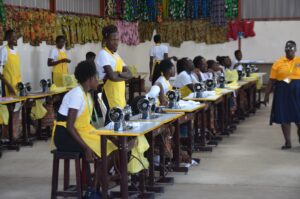President Yoweri Kaguta Museveni has been expressing a complete vision for transforming Uganda into a self-sustaining economy, a vision rooted in socio-economic transformation, emphasizing the importance of local production, infrastructure development, and strategic resource management.
The President underscores that achieving the Sustainable Development Goals (SDGs) necessitates significant socio-economic transformation as he advocates for active involvement in four main sectors that include:
Commercial agriculture through poverty alleviation programs like the Parish Development Model (PDM) and the 4-acre model, among others, is aimed at producing agricultural products for sale, manufacturing services to employ a large personnel and capital, especially in manufacturing, and Information and Communication Technology (ICT) to make the best use of technological tools and resources used to transmit, store, create, share, or exchange information.

To show his commitment to the cause and boost PDM with the aim of eradicating poverty within the local populace by joining the money economy, President Museveni began conducting a countrywide tour to monitor and evaluate the progress of PDM and wealth creation. He began with the Bukedi sub-region on November 10, 2024, moved to Greater Kibale to officially launch the 4-acre model in the region on Friday, November 15, 2024, and he again embarked on the tour in the Teso sub-region on Monday, November 18, 2024.
Read Also: Serere Ex-Taxi Operator Makes Shs600M Yearly After Adopting Museveni’s Wealth Creation Strategies
While in Bukedi, where he addressed a rally at Kamuge playground in Kamuge town council, Pallisa district, President Museveni reiterated his call to the people of Bukedi to embrace commercial agriculture with what he called ekibaro so as to transform their livelihoods.
“Ekibaro can be done through the 4-acre model, where you can use one acre to grow coffee, the second acre for fruits, the third acre for pasture for dairy cows, and the fourth acre for food crops. Then in the backyard, a farmer can do poultry, piggery, and fish farming in ponds. You can also add cocoa and palm oil to the seven activities,” he said.
Read Also: Museveni Reschedules His PDM Assessment Tour to Bukedi Sub-Region
He added that Ugandans, more especially the youth, should fully utilize their land resources to foster economic prosperity because many communities mismanage fertile land, particularly in regions like Butebo district, where more emphasis for sustainable agricultural practices should be adopted to embrace diversified agriculture, such as cash crops like coffee and cocoa.
In embracing agriculture sustainably, it will enable the government to extend innovative farming techniques such as irrigation and organic fertilization to locals as a means to provide a steady water supply when rainfall is unpredictable or droughts occur. Additionally, the education services on how to manufacture organic fertilizers will also be extended to the grassroots level.
Following launched initiatives such as NAADS, Operation Wealth Creation (OWC), PDM, and Emyooga, aimed at bolstering local production, the president established companies like Lukonge Cotton Company Limited, which focuses on cassava starch production, a move that was designed to reduce dependency on imports for pharmaceutical manufacturing to drive Uganda’s self-sufficiency and economic resilience.
“I believe that without addressing infrastructure needs—such as electricity and transport—economic growth will be underdeveloped; therefore, investments in these areas are crucial for supporting industries and enhancing productivity in our country,” President Museveni said.
Read Also: IMF Confirms Uganda to Be Fastest-Growing Economy in Africa
As Ugandans adopt social-economic transformation, there is a need to be reminded of the critical role of infrastructure in economic growth, which President Museveni committed to investing in: industrial parks, roads and transportation networks, and energy supply systems.
These improvements in Uganda are essential in facilitating trade and attracting investment, which is a vital achievement that increases Gross Domestic Products (GDP) within a decade, which increases a number of investors there by increasing a number of jobs.